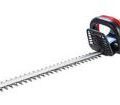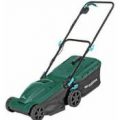If you need to get your Hedge trimmer blades lubricated – then make sure to first take a quick look this video outlined below which will outline all the main points that need to be considered in completing this task.
Landscapes
Hedge trimmers are essential tools for gardeners and landscapers across the country and they allow for precise and efficient trimming of hedges, shrubs, and bushes, resulting in neat and well-maintained landscapes. There are several types of hedge trimmers available on the market, each with its own set of features and benefits and these are some of the most common types of hedge trimmers available across different markets
View also: Popular Hedge Trimmers here
Lubrication Tips
Video - How to Lubricate Hedge Trimmer Blades
Manual Hedge Trimmers
These are the simplest and most traditional hedge trimmers available. They consist of two sharp blades that are operated by hand. The blades are designed to be long and straight, allowing for clean, straight cuts. Manual hedge trimmers are ideal for small gardens and simple hedge designs.
Electric Hedge Trimmers
Electric hedge trimmers are powered by electricity and are much more efficient than manual hedge trimmers. They come in two varieties: corded and cordless. Corded electric hedge trimmers are more powerful than cordless models and are ideal for larger gardens. Cordless electric hedge trimmers are more convenient and easy to use, but their battery life is limited.
Gas-Powered Hedge Trimmers
Gas-powered hedge trimmers are the most powerful hedge trimmers available. They are ideal for commercial use and large gardens. Gas-powered hedge trimmers are designed to be durable and long-lasting, making them a popular choice for professionals.
Pole Hedge Trimmers
Pole hedge trimmers are designed to trim tall hedges and bushes that are difficult to reach. They feature a long handle that extends upward, allowing the user to trim from a safe distance. Pole hedge trimmers can be electric or gas-powered and are ideal for tall hedges and shrubs.
Articulating Hedge Trimmers
Articulating hedge trimmers are designed to trim hedges and bushes in hard-to-reach areas. They feature a flexible blade that can be adjusted to different angles, making it easy to trim hedges and shrubs that are difficult to access. Articulating hedge trimmers can be electric or gas-powered and are ideal for complex hedge designs.
View also: Popular Grass Trimmers here
Factors to Consider
When choosing a hedge trimmer, it's important to consider the size of your garden, the type of hedge or shrub you want to trim, and your personal preference. With the right hedge trimmer, you can keep your garden looking neat and well-maintained all year round.
Hedge Trimmer Blades
These tools come in different sizes, designs, and types, but one of the most important components is the blade. Hedge trimmer blades play a crucial role in determining the tool's effectiveness, efficiency, and safety and these are some of the different types of blades used in hedge trimmers that you will find
Single-sided Blades
Single-sided blades are commonly used in manual hedge trimmers. They have a sharp edge on one side and a flat surface on the other. These blades are ideal for straight cuts and trimming small hedges.
Double-sided Blades
Double-sided blades are the most common type of blade used in electric and gas-powered hedge trimmers. They have sharp edges on both sides and can cut both ways, making them ideal for trimming larger hedges and bushes. Double-sided blades are designed to be long and straight, allowing for a clean and precise cut.
Dual-Action Blades
Dual-action blades are a type of double-sided blade that has teeth that move back and forth in opposite directions. This design reduces vibration and makes the blade more efficient, allowing for faster and more precise cuts. Dual-action blades are commonly used in electric hedge trimmers.
Tooth Spacing
Hedge trimmer blades can also vary in the spacing between the teeth. The spacing can be as narrow as 1/4 inch or as wide as 1 inch. The spacing between the teeth determines the thickness of the branches that can be cut. Wider tooth spacing is ideal for thicker branches, while narrower tooth spacing is best for fine trimming.
Blade Length
Blade length is another important consideration when choosing a hedge trimmer. Longer blades are ideal for trimming larger hedges and shrubs, while shorter blades are better for smaller hedges and precision trimming. Blade length can range from 16 to 40 inches.
Blade Choices
Hedge trimmer blades come in different shapes, sizes, and types. The blade you choose will depend on the type of hedge or shrub you want to trim, the size of your garden, and your personal preference. It's important to choose the right blade for your hedge trimmer to ensure efficient and safe trimming. Regular maintenance of the blades, such as cleaning, lubricating and sharpening is also important to ensure their effectiveness and longevity.
View also: Treatments for Weeds here
Types of Lubricants for Hedge Trimmer Blades
Keeping your hedge trimmer blades well-lubricated is an essential part of maintaining their effectiveness and longevity. The right lubricant will help to prevent rust and corrosion and keep the blades moving smoothly and these are some of the different types of lubricants you can use for hedge trimmer blades
Oil
Oil is the most common lubricant used for hedge trimmer blades. It is easy to apply and provides excellent protection against rust and corrosion. There are different types of oils that can be used for hedge trimmer blades, such as vegetable oil, motor oil, and bar and chain oil. Vegetable oil is the most environmentally friendly option, while motor oil and bar and chain oil are specifically designed for use with power tools.
Grease
Grease is a thicker lubricant than oil and is ideal for protecting the gears and bearings in your hedge trimmer. It is especially useful for gas-powered hedge trimmers and should be applied to the gear housing and bearings.
Wax
Wax is another type of lubricant that can be used for hedge trimmer blades. It provides excellent protection against rust and corrosion and is easy to apply. However, it may not be as effective as oil or grease in protecting the blades and may need to be reapplied more frequently.
Silicon Spray
Silicon spray is a non-greasy lubricant that is ideal for use with electric hedge trimmers. It is easy to apply and provides excellent protection against rust and corrosion. However, it may not be as effective as oil or grease in protecting the blades and may need to be reapplied more frequently.
Dry Lubricants
Dry lubricants, such as graphite powder or Teflon spray, are ideal for use with hedge trimmers that are used in dusty environments. They provide excellent protection against rust and corrosion and do not attract dust and dirt like oil and grease. However, they may not provide as much protection as oil or grease in wet environments.
Trimmer Type
Choosing the right lubricant for your hedge trimmer blades will depend on the type of trimmer you have and the environment in which it is used. Oil and grease are the most common types of lubricants used for hedge trimmer blades and provide excellent protection against rust and corrosion. Wax, silicon spray, and dry lubricants are also effective options. It's important to follow the manufacturer's recommendations for lubrication and maintenance to ensure the best performance from your hedge trimmer.
Read also: Best Electric UK Lawnmowers
Community Feedback
Have you any tips yourself when it comes to using Hedge Trimmers? If so, please educate others in the wider community by leaving a comment in the comment box section provided below…





Recent Comments